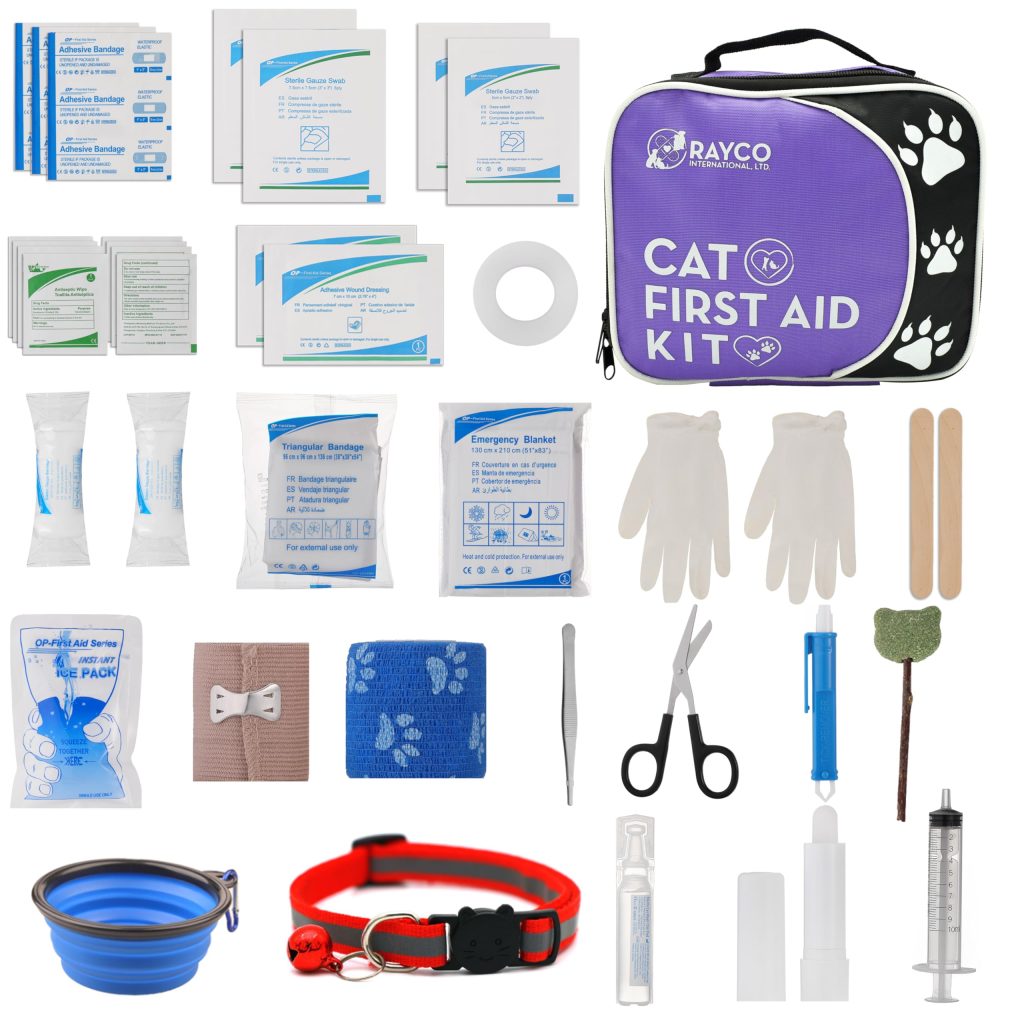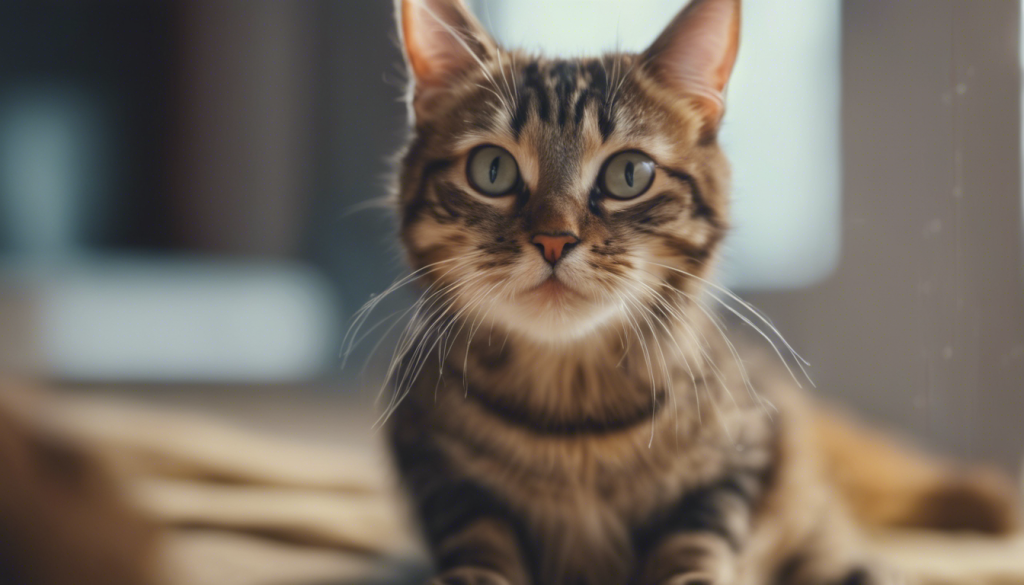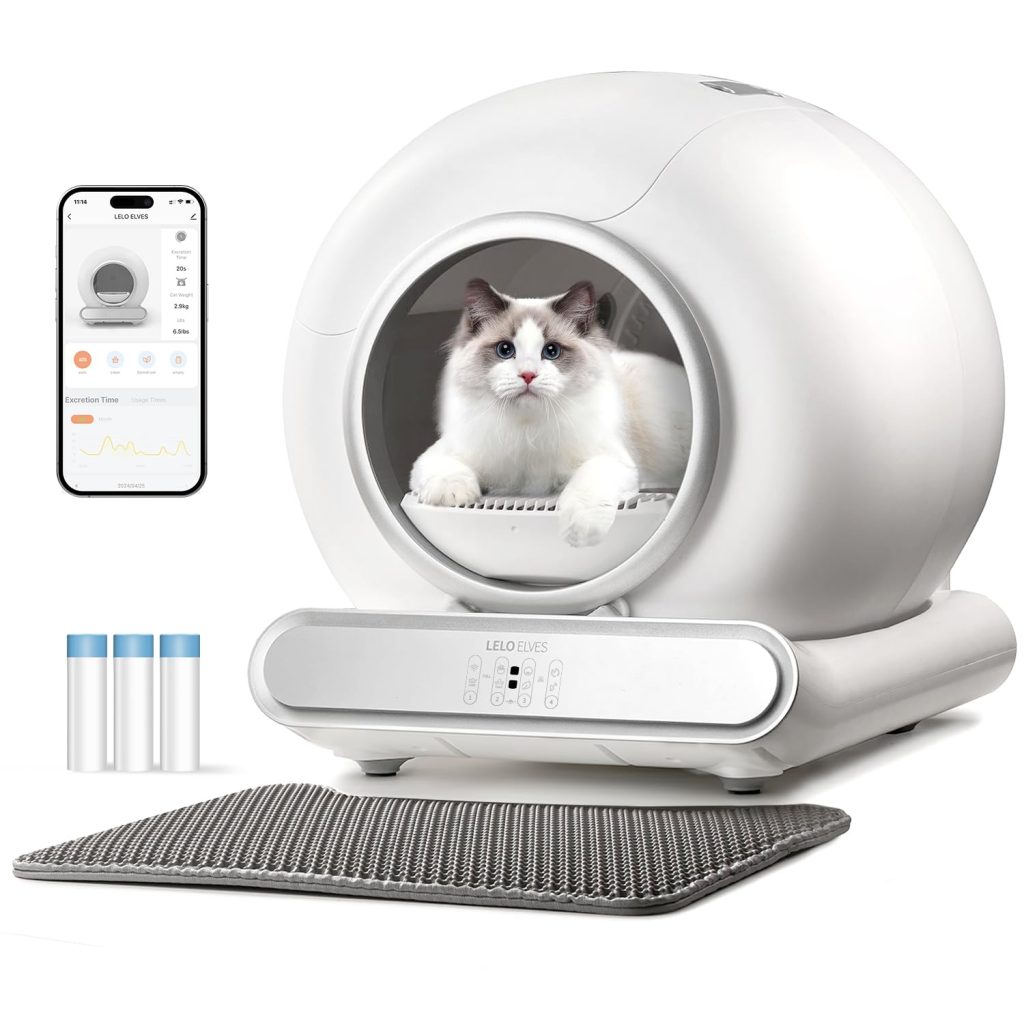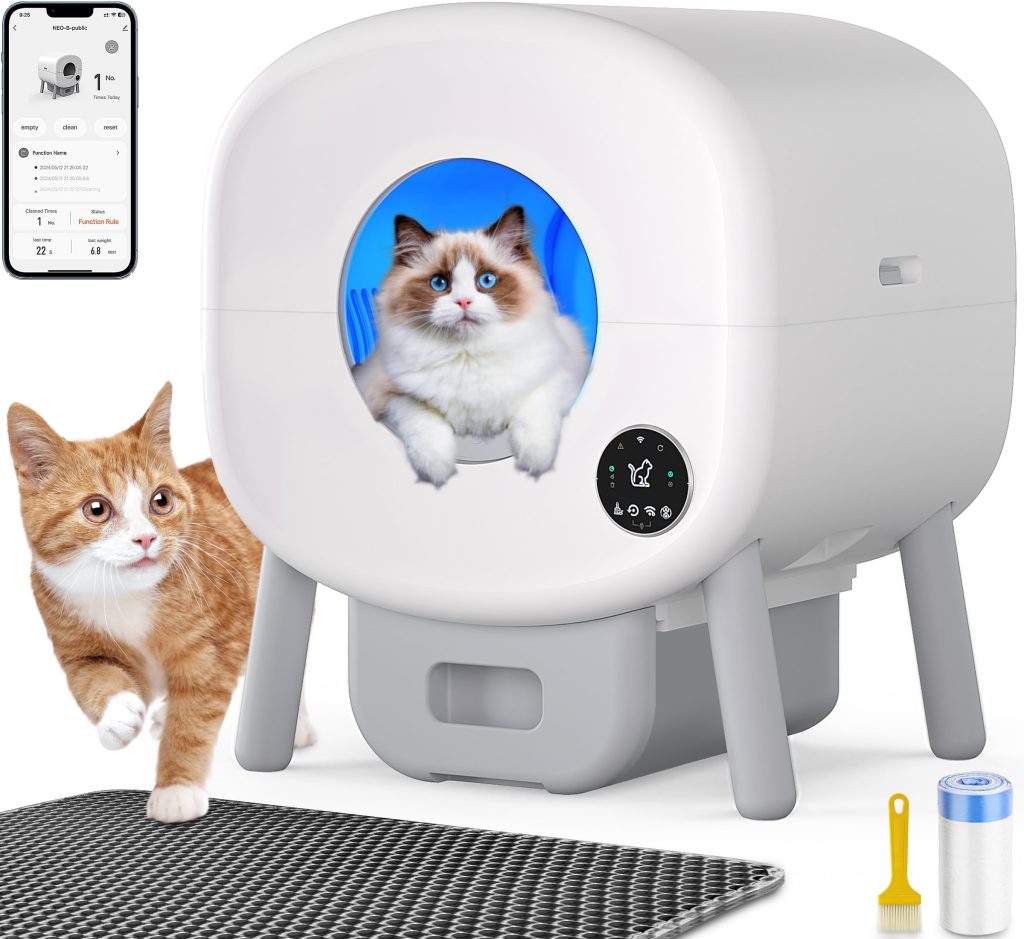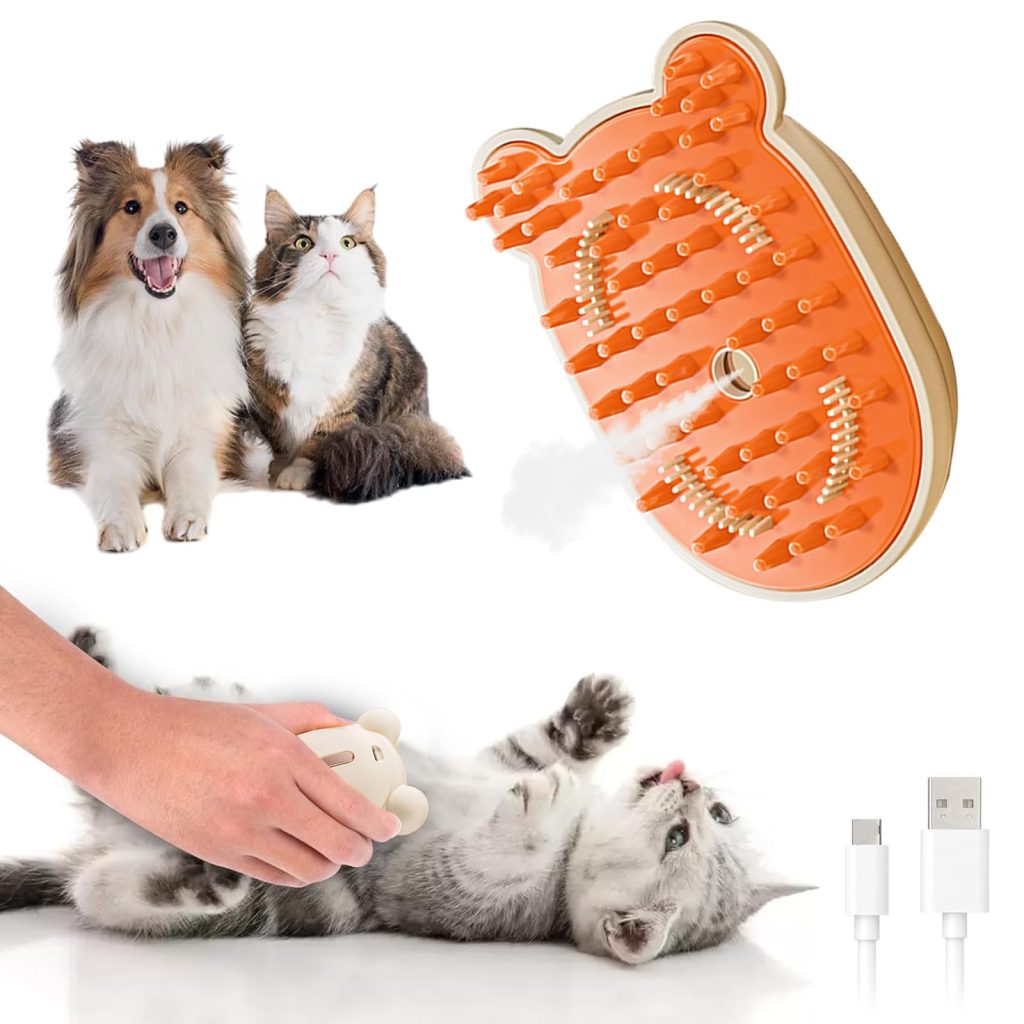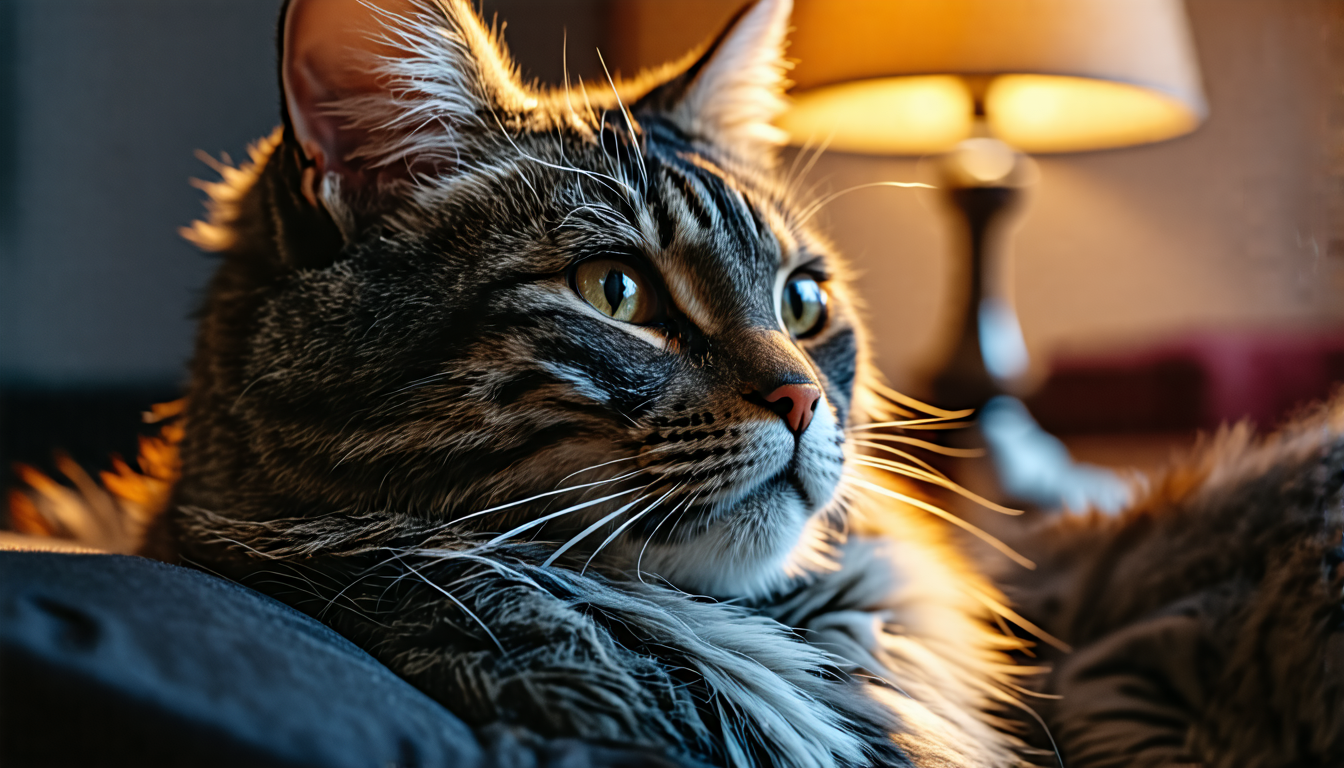
Obesity in cats, an increasingly prevalent issue in state-of-the-art feline health, extends far beyond the aesthetic concerns that may initially catch a pet owner’s eye; it represents a complex interplay of genetics, environment, and human behavior that warrants an astute understanding to safeguard our feline companions. Scientific studies underscore the notion that a cat’s predisposition to weight gain can be heavily influenced by factors such as metabolic rates, hormonal imbalances, and even this breed itself—certain breeds, like the Maine Coon or Ragdoll, demonstrate a greater susceptibility to excess weight accumulation.
Additionally, the sheer availability of calorie-dense foods, coupled with a sedentary lifestyle that often borders on commonplace in indoor environments, propels the scale tipping ever more in favor of obesity. The adage “you are what you eat” resonates profoundly within feline nutrition; in fact, many commercial cat diets contain fillers and non-nutritive ingredients that do little to promote overall health while seducing cats with irresistible tastes. Consequently, it becomes imperative that we, as caregivers and advocates, scrutinize the nutritional components of our cats’ diets with the precision akin to a maestro conducting a symphony.
Understanding the classification of obesity is critical, whereby categorizing a feline as overweight typically involves a body condition score (BCS) where scores above 5 on a 1-9 scale indicate an excess of fat. This assessment allows for a more nuanced conversation about what constitutes a healthy weight for our beloved companions. As the Food and Agriculture Organization (FAO) suggests, “Much of an animal’s health is tied to nutrition,” highlighting the essential role that appropriate feeding plays in maintaining an optimal weight. A diet rich in protein, with the inclusion of essential fatty acids and micronutrients, forms the cornerstone of a weight-appropriate regimen, and should be meticulously measured and tailored based on the individual cat’s activity level and health needs.
Moreover, it’s crucial to recognize the psychological components of feline feeding behaviors; many cats can develop emotional connections to food, leading to overeating in response to stress or simple ennui. The provision of engaging environments—including interactive play sessions and enrichment activities—can serve as both a preventative strategy and a solution to weight management dilemmas, effectively channeling their energy in productive, stimulating ways. Since felines are naturally inclined to playful pursuits, incorporating regular exercise into their daily routine not only enhances physical well-being but also fosters a deeper bond between cat and caregiver.
Ultimately, an informed approach to understanding obesity in cats involves recognizing not merely the caloric intake but the broader context of their lives, laying the groundwork for a demanding yet gratifying journey towards fostering health and longevity. As owners, we hold the key to unlocking a feline’s potential, paving a path toward a vibrant lifestyle, flourishing with the playfulness and vitality that define the essence of our cherished pets.
Health risks associated with obesity
The relationship between obesity in cats and various health risks cannot be overstated, as the implications of excess weight extend far beyond superficial appearances and encroach upon vital aspects of well-being. Indeed, as studies demonstrate, overweight cats face an increased likelihood of developing a myriad of serious health conditions that can significantly diminish their quality of life and longevity.
One of the most pressing concerns is the increased risk of diabetes mellitus, a metabolic condition marked by elevated blood sugar levels due to insulin resistance. The likelihood of a cat developing diabetes sharply rises with each pound above its ideal weight. Consequently, adopting a preventative mindset with respect to weight management becomes essential; veterinarians often liken the fight against feline diabetes to a precarious balancing act, where every morsel of food can tip the scale toward health or disease. Recognizing early signs, such as increased thirst and frequent urination, is paramount, as timely intervention can reverse impending health crises.
Furthermore, obesity is intricately linked to joint issues, particularly osteoarthritis—a debilitating condition that compromises mobility and predisposes cats to a sedentary lifestyle that only exacerbates their weight challenges. The additional burden of weight strains joints, leading to pain and discomfort, making even routine actions like grooming or using the litter box daunting tasks. This vicious cycle of discomfort and inactivity not only diminishes the cat’s overall happiness but can spiral into a total decline in health, akin to a snowball rolling downhill, gaining momentum and size with little chance of reversing its course.
Moreover, the cardiovascular system faces significant threats from excessive weight as well. Obese cats exhibit higher rates of hypertension and heart disease, with the added stress on the heart posing a silent, yet formidable, danger. Studies show that fat tissue can release pro-inflammatory substances, further exacerbating inflammation throughout the body, thereby increasing the risk of cardiac complications. A healthy heart is vital, as it fuels not only bodily functions but also the energy and vigor that characterize a playful and engaging cat.
In addition, respiratory problems often plague overweight cats, as excess fat can hinder overall lung function, making even normal activities such as playing or meowing laborious. This respiratory distress is an omnipresent reminder of the repercussions of obesity, as it can lead to a decreased capacity for exercise—a critical component of overall health that many cats desperately need in order to shed pounds and regain their vitality.
Equally vital is the impact of obesity on feline skin and coat health; obese cats are often less able to groom themselves properly, resulting in matted fur and skin irritations that can introduce a host of additional health issues. The interplay of obesity and dermatological health is yet another facet of the larger crisis at hand, and it paints a comprehensive picture of the interconnectedness of physical well-being and lifestyle choices.
To compound these challenges, the emotional nature of a cat’s life can also be adversely affected by obesity, leading to increased anxiety and depression. Social interaction, play, and exploration are essential to a cat’s mental health, yet obesity can curtail these behaviors, trapping them in an unfulfilled existence. This reinforces the assertion that combating obesity is not merely a physical task, but a holistic endeavor that necessitates addressing emotional and psychological factors as well.
In essence, the web of health risks associated with obesity in cats is extensive and multifaceted, intertwining various bodily systems and intricately connected to their overall quality of life. As caregivers, fostering an environment conducive to healthy habits—through nutrition, physical activity, and emotional enrichment—becomes not only a responsibility but a commitment to ensuring that our feline companions live healthy, vibrant lives filled with joy.
Symptoms of overweight cats
Observing a cat that’s carrying excess weight can be a sobering experience, yet it’s often the subtle signs that may go unnoticed that provide critical insights into their condition. Recognizing the symptoms associated with overweight cats becomes essential for timely interventions and holistic care. A cat’s body should ideally present a graceful silhouette, and excess fat often leads to noticeable changes that may escape casual observation, especially in furry companions where fur can obscure true form.
One of the most evident signs is a lack of visible waistline—in healthy cats, a gentle taper should be discernible between the ribcage and the abdomen. Conversely, in an overweight feline, this curvature is typically absent, replaced by a more rounded, cylindrical shape. Pet owners should learn to place their hands along their cat’s sides: in a healthy weight cat, the ribs should be palpable without excessive pressure. If an owner finds themselves pressing too firmly to feel those ribs, it is a sobering indication of possible weight issues that could warrant further attention.
Another significant indicator is the cat’s overall activity level. Cats are inherently playful and require regular exercise for both physical and mental stimulation; however, a cat who is reluctant to engage in play and seems to prefer inactivity may be exhibiting symptoms of excess weight. This lethargy not only reduces their well-being but can also lead to psychological distress. Cats that once frolicked with abandon can regress into solitary existence, primarily due to the discomfort or fatigue that can arise from carrying too much weight. As the old saying goes, “a tired cat is not an active cat,” and every day they spend in a sedentary state compounds the health risks associated with obesity.
Additionally, feline grooming rituals serve as a reflection of health; an overweight cat may struggle with self-grooming, resulting in an unkempt coat, matting, or even skin infections. The inability to reach certain areas due to excess bulk not only impedes physical health but can also foster feelings of shame or frustration, adding an emotional layer to their plight. Grooming is vital not only for visual aesthetics but for skin health; thus, any neglect in this arena can be a telltale sign of obesity.
Moreover, a shift in dietary habits can be revealing. Cats that are overweight may show disinterest in food at times and then overindulge at others, a pattern often driven by emotional states or behavioral patterns rather than pure hunger. Owners should be vigilant about changes in eating behavior and recognize that not all food consumed is necessarily needed for sustenance; sometimes, it serves as a coping mechanism for stress or boredom.
Vocalizations can also reflect changes in their health status. An overweight cat might vocalize more often, seeking food or attention, exhibiting a behavioral response that juxtaposes their physical condition with emotional needs. Increased meowing for food may mask an underlying issue, as these calls for engagement can highlight issues of discontent or distress, warranting further exploration of their behavioral welfare.
In observing these symptoms, it especially important for cat owners to approach the matter with compassion and understanding, recognizing the intrinsic link between weight, health, and overall quality of life. By employing vigilant observation and expressing awareness of these symptoms, pet owners not only foster an environment of well-being but also cultivate a deeper bond with their feline friends, ultimately steering them toward healthier choices and more fulfilling lifestyles. Engaging with a veterinarian to map out tailored nutritional plans and exercise regimens becomes a necessary next step, amplifying efforts to restore vitality and joy to a feline that may find itself struggling under the pressure of excessive weight.
Prevention strategies for obesity
In pursuing effective strategies to prevent obesity in cats, pet owners must embrace a multifaceted approach that encompasses dietary adjustments, behavioral modifications, and environmental enrichment. The cornerstone of any strategy begins with understanding the nutritional requirements unique to each cat, adapting these needs according to age, weight, and activity level. A diet that’s high in protein and low in carbohydrates not only aligns with a cat’s natural dietary habits but also promotes satiety without excessive caloric intake. Careful label scrutiny is essential, as many commercial cat foods contain hidden sugars and fillers that contribute little to overall health.
Incorporating feeding schedules into your cat’s daily routine can also serve as a pivotal method for preventing obesity. Rather than free-feeding, a practice that can lead to indiscriminate eating, establishing fixed meal times encourages mindful consumption and helps regulate appetite. Small, frequent meals can be beneficial, allowing cats to manage their hunger and reducing the temptation to overindulge. Additionally, using puzzle feeders or interactive toys can transform mealtime into a stimulating exercise, reducing the likelihood of lethargy while encouraging active engagement.
Addressing physical activity plays an equally crucial role in obesity prevention; cats are instinctively hunters who thrive on physical exercise. Organized playtime—utilizing feather wands, laser pointers, and various toys—should be woven seamlessly into daily life, fostering both physical fitness and mental stimulation. As the renowned feline behaviorist Jackson Galaxy puts it, “Cats need to be mentally and physically stimulated, or they’ll find their own ways to entertain themselves, often in destructive or unhealthy ways.” Regular play not only combats weight gain but also strengthens the bond between cat and caregiver.
Creating an enriching environment is paramount as well; opportunities for climbing, scratching, and exploring can all incite natural feline behaviors that promote active living. A cat tree, for example, not only contributes to physical exercise but also offers an area for vertical exploration—catering to a feline’s instinctual need to survey their territory from an elevated vantage point. Moreover, providing stimulating toys that mimic prey movements can redirect a cat’s energy in productive ways: transforming their instinctual desires into engaging play sessions that combat boredom and its associated temptations to graze mindlessly on food.
Furthermore, owners should engage in regular veterinary check-ups to evaluate their cat’s weight and overall fitness. Establishing a relationship with a veterinarian who understands the nuances of feline health can provide insights into necessary dietary adjustments and the development of a tailored weight management plan. Early intervention is key; as with humans, recognizing shifts in weight before obesity sets in can produce a more favorable outcome in ensuring your cat remains healthy and vibrant.
In addition to physical and dietary alterations, it’s important to consider the psychological elements of feline wellness. Cats, much like humans, can experience shifts in mood that affect their behavior around food and exercise. Creating a stable environment, enriched with love, mental engagement, and regular routines, can diminish the stress that often leads to overeating or sedentary habits. Observing for signs of anxiety or behavioral changes will allow owners to adjust their approaches and provide the support their cats need to thrive.
Ultimately, establishing a holistic framework of prevention strategies can not only mitigate the prevalence of obesity in our feline companions but can also foster a joyful, engaging life for them. Investing in their nourishment, stimulating their minds, and promoting physical activity equips cat owners with the tools necessary to ensure their pets lead healthful lives—one paw at a time. In the grand tapestry of pet ownership, the simplest acts of love—providing nutritious food, engaging playtime, and nurturing emotional support—form the strong threads that bind health, happiness, and longevity together.
Effective weight management techniques
To effectively manage the weight of our feline companions, it very important to adopt a systematic and compassionate approach, one that addresses both their physical and emotional needs. The integration of a balanced diet with a structured feeding schedule is at the forefront of weight management techniques. Rather than relying on ad libitum feeding—which can often lead to overeating and a host of health issues—designing a tailored feeding regimen with precise portion sizes is essential. As emphasized by renowned veterinary nutritionist Dr. Lisa Weeth, “It’s not just about what cats eat, but how and when they eat that shapes their health.” Therefore, setting specific feeding times and adhering to the prescribed amounts fosters discipline and allows the cat to develop healthier eating habits, akin to instilling virtue in a well-tuned symphony.
Moreover, it is imperative to focus on the nutritional quality of the cat’s food rather than simply the quantity. A diet enriched with high-quality proteins, essential fatty acids, and vital nutrients supports overall well-being while promoting satiety. Eliminating empty calories found in many commercial cat foods—such as those laden with fillers and artificial additives—helps alter the caloric balance favorably. Owners should seek out high-protein, low-carbohydrate diets, as these closely align with a cat’s natural dietary preferences. A diet filled with wholesome ingredients not only enables an efficient metabolism but can also improve a cat’s vitality and mood, showcasing how nutritional choices directly impact both physical health and behavioral expressions.
Additionally, enriching the cat’s environment is vital for effective weight management. Play is a fundamental aspect of a cat’s daily life and should be seamlessly integrated into their routine. Engaging in interactive sessions that simulate hunting behaviors—using feather toys, laser pointers, or fishing pole-style toys—invigorates their instinctual drives while burning calories. For instance, it has been observed that cats who engage in at least 15 minutes of vigorous play three to five times a week can significantly enhance their fitness levels. Additionally, encouraging independent play with puzzle feeders not only provides mental stimulation but also influences foraging behavior, transforming mealtime into an active experience rather than a passive one.
Incorporating gradual exercise into the cat’s daily activities serves to mitigate the risks of injury while enhancing physical fitness. Cats are naturally inclined to short bursts of activity rather than prolonged exercise, so creating an environment where they can playfully chase after toys and climb structures can reinforce their desire to explore and move. Vertical spaces, such as cat trees or shelving units, can be wonderfully beneficial as they not only allow cats to utilize their climbing instincts but also allow them to gauge their territory—an intrinsic aspect of feline behavior that fosters confidence and security.
Furthermore, it’s essential to recognize the psychological aspects of weight management. Behaviors such as stress eating or food scavenging can often stem from boredom or anxiety. Thus, nurturing a stable and enriched environment where cats feel safe and stimulated can alleviate such behaviors. The incorporation of varied toys and activities that challenge the intellect—like treat-dispensing balls or motion-activated toys—can redirect the cat’s focus away from food as a coping mechanism. By addressing the emotional welfare of a cat holistically, one lays the groundwork for healthier habits that contribute to both weight management and well-being.
Regular veterinary check-ups to monitor weight progress and health status cannot be overemphasized in this journey. Establishing a partnership with a veterinarian who appreciates the intricacies of feline health can provide personalized insights and adjustments tailored to the individual cat’s journey. Collaboration with veterinary professionals in setting measurable goals creates accountability and encourages consistent progress towards a healthier weight. Through continued education for owners about feline health, they can be more proactive and engaged in fostering their pet’s well-being.
Effective weight management techniques draw upon a holistic repertoire that encapsulates a balanced diet, rich environmental enrichment, and emotional support. Each tailored strategy contributes not only to the physical health of our feline companions but also plays a pivotal role in enhancing their quality of life, ensuring they remain joyful and engaged members of the family. Our efforts in guiding and supporting our cats throughout their lives nurtures not only their bodies but also their spirits, creating a reciprocal relationship built on care, love, and commitment to thriving together.
